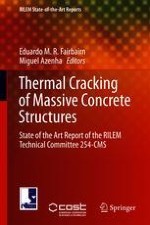2019 | OriginalPaper | Buchkapitel
4. Mechanical Properties
verfasst von : Farid Benboudjema, Jérôme Carette, Brice Delsaute, Tulio Honorio de Faria, Agnieszka Knoppik, Laurie Lacarrière, Anne Neiry de Mendonça Lopes, Pierre Rossi, Stéphanie Staquet
Erschienen in: Thermal Cracking of Massive Concrete Structures
Aktivieren Sie unsere intelligente Suche, um passende Fachinhalte oder Patente zu finden.
Wählen Sie Textabschnitte aus um mit Künstlicher Intelligenz passenden Patente zu finden. powered by
Markieren Sie Textabschnitte, um KI-gestützt weitere passende Inhalte zu finden. powered by
